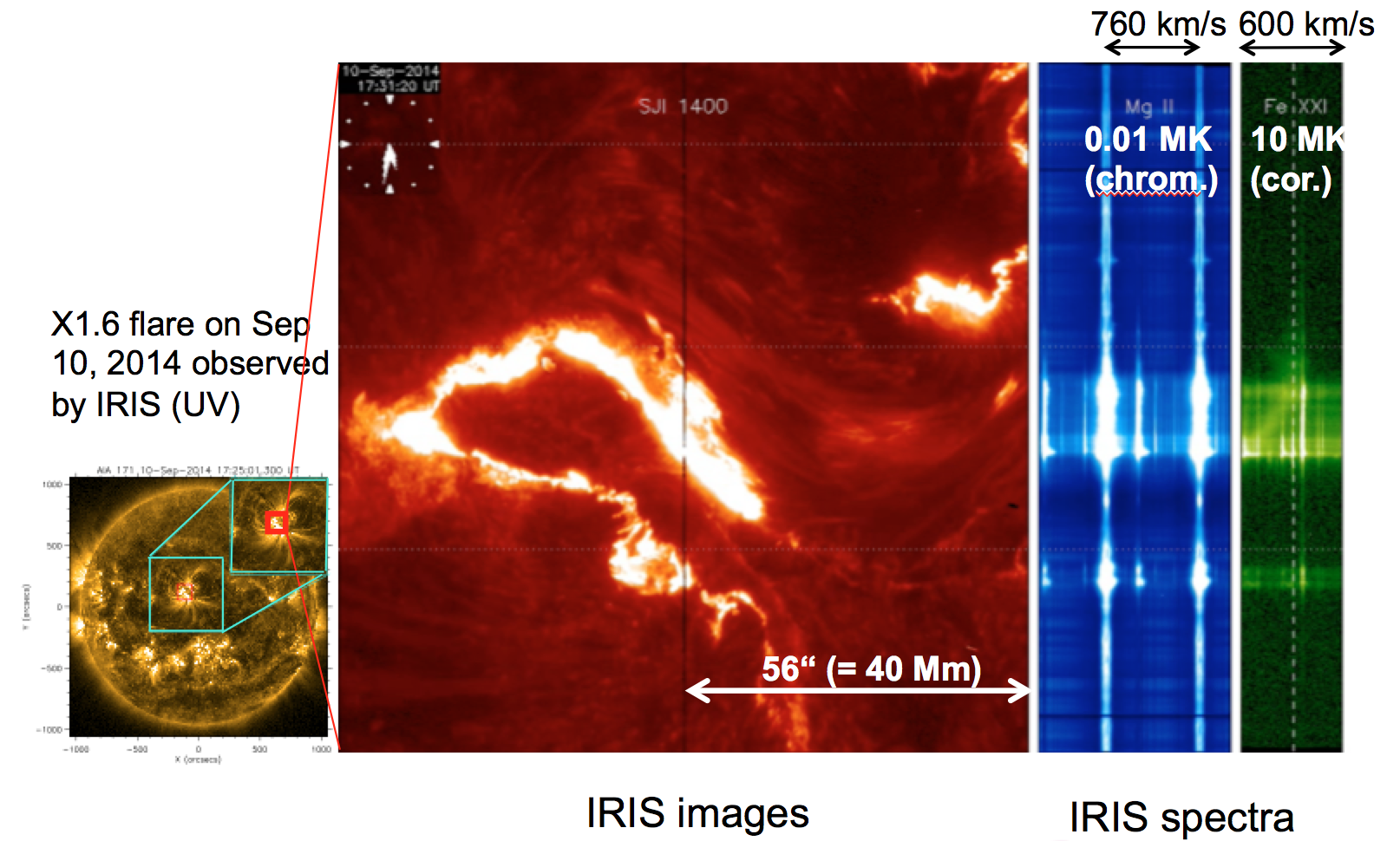Research
Can flares be predicted based on typical spectra that appear before flares?
Flare prediction is an extremly difficult problem, in fact, it is not known yet if flares are even predictable. While past studies mostly focused on magnetic field data to make predictions (e.g. Leka&Barnes 2003, Bobra & Couvidat 2015), we investigated the use of UV spectra to predict flares. Regions that are about to erupt often show enhanced brightenings and we wanted to test if there were typical spectra that appear only before flares.
We found that we could correctly identify pre-flare spectra approximately 35 minutes before the start of the flare. The accuracy increased to 90% when looking closer in time to the flare. This indicates for the first time that spectra can be used for flare prediction, although more advance warning would be desirable and therefore, we are expanding our models.
Publication: Panos & Kleint, ApJ 891, 17 (2020)


Classification of flare spectra. These 9 types of spectra (right panels) occurred during a flare and their locations on the Sun are color-coded in the left image.
Do all flares share the same physics?
Solar flares differ by orders of magnitude in energy and duration, but are the basic physical processes the same for all flares? Similar physics would imply similar spectra, in which the information of temperature, density, and velocity of the solar atmosphere is encoded. But comparing millions of spectra manually would be an impossible task.
Machine learning helps us to classify and analyze millions of data points efficiently. We used an adapted version of the k-means classification to investigate 19 flares, which contained several million spectra. We found that the same type of spectra (depicted light and dark blue in the picture left) appear in every single flare, which indicates that all flares seem to have some common physics.
Publication: Panos, Kleint, Huwyler et al., ApJ 861, 62 (2018)
High resolution flare observations
To observe flares in detail, we need large telescopes with the most modern instrumentation. Our group also specializes in designing astronomical instrumentation, coordinating ground- and space-based observations, and using the best facilities to observe flares.
L. Kleint led the optics redesign of the largest European solar telescope (GREGOR), leading to the highest resolution solar images obtained from Europe to date. A press release, as well as an article on medium.com and a scientific publication (Kleint, Berkefeld, Esteves et al, A&A 641, 27, 2020) describe the success.
We also caught the "best-observed" solar flare by coordinating a world-wide observing campaing with several NASA satellites and the Dunn Solar Telescope, resulting in a press release by NASA.
Further publications on our work and on flare physics can be downloaded via the Astrophysics Data System (ADS).

